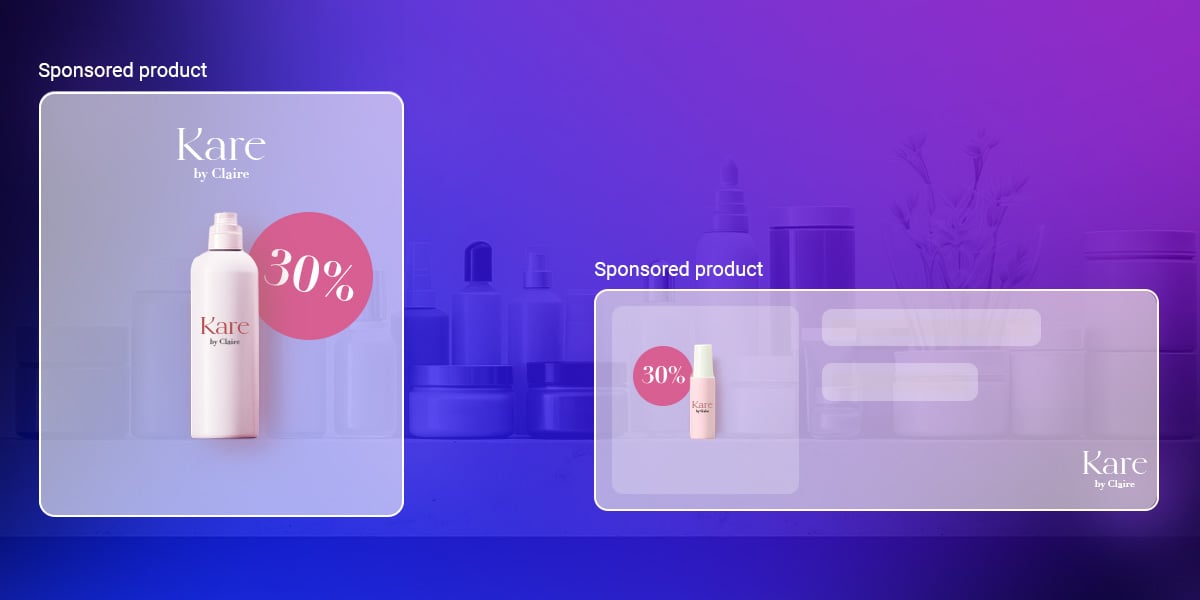
A Guide to Increasing Video Advertising Engagement
If a picture is worth a thousand words, then a video is the key to next-level website traffic. Video advertising provides an unrivaled platform for short-form storytelling that connects to your audience more deeply.
Not only does it provide entertainment and value, but video also boosts brand loyalty and conversions. According to research by Wyzowl, 86% of marketers already use video as a marketing tool, and 81% reported that videos had led to an immediate increase in sales.
While the ROI is undeniable, implementing an effective video advertising strategy can seem tricky. Getting your brand noticed is challenging with so many display ads scrambling for attention. Video creative fatigue is rife – people are bored of seeing the same old ads day in, day out. Video ads need to capture your audience’s attention within seconds to get them to stop scrolling and focus on your content instead.
How can you optimise video ads for maximum engagement?
This guide will cover how to increase video engagement while identifying and bypassing creative video fatigue. We’ll include best practices for in-banner video advertising to boost business growth and brand exposure.
What is video engagement?
Video engagement involves holding your viewers’ attention and gaining their interest. Did they watch your video until the end, or did they stop in the middle?
On social media, video engagement measures:
- Likes
- Comments
- Shares
People have more access to different types of content than ever before. Naturally, they’ve become more selective about where to focus their attention and need a reason to stop and engage with your video ad.
Ads must be relevant, compelling and highly targeted to specific audiences to encourage a positive reaction to your brand. In its 2022 State of Marketing Video report, video production company Wyzowl found that most marketing professionals (62%) consider video engagement the top metric. Getting video engagement right is important because 86% of marketers say video has helped them generate leads.
However, views and clicks were equally important for measuring success, demonstrating that video engagement is prioritised over bottom-line sales (27%). Perhaps the focus on views and engagement isn’t surprising since video ads are often implemented at the consideration stage of the customer journey.
Engagement can include interactions with your brand, such as likes and comments on social media. This type of qualitative data shows your video’s emotional effect on your viewers and helps you determine future topics and angles to focus on.
What is a good video engagement rate?
While view counts are a great way of seeing how often your ads are watched, they are a vanity metric. You’ll need more detailed video advertising metrics to determine who engages with your brand and how well your ad performs.
According to Google, for video engagement to take place, the user must watch a video ad for at least 10 seconds. If the ad is shorter than 10 seconds, then the customer needs to watch the entire video to count as an engagement. The engagement rate comprises the number of times people engage with your ad divided by the number of times it is shown.
Most marketers aim for a 1-5% engagement rate.
You can monitor metrics to see how far people make it through your video. Few people will make it through an entire video, but getting beyond the first 10 seconds of a display ad is a good engagement rate. Remember that Instagram and Facebook consider three seconds a view, while engagement metrics involve interaction with the video.
How do you engage customers in video marketing?
Research by video production company Wyzowl found that consumers now watch over 19 hours of online video per week, up 3 hours since 2020. There’s clearly growing competition for video to stand out. But there’s also increasing demand for video as a medium. In fact, 73% of consumers said they’d prefer video content over articles, social posts or webinars.
The most important thing you can do to increase video engagement is to grab attention within the first few seconds.
Yet, in everything from social media copy to TikTok videos, we’re so used to consuming ultra-short content we can quickly gloss over anything that doesn’t capture our attention immediately.
Studies have shown that you have eight seconds to grab your audience’s attention, or they’ll just scroll by.
Here are some ways you can make your video ads more engaging:
Use compelling visuals
Video ads provide a richer, more versatile form of dynamic content. With short-form video content, the right visuals are even more essential to conveying your message swiftly.
Engage your audience with fast-paced shots and memorable imagery. Experiment with live-action, stop-motion and 2D and 3D animation ads. You don’t have to be an entertainment company to use animation. Customer relationship management platform Zendesk, meditation app Headspace, and spreadsheet tool Airtable have successfully used animation in video ads.
Add personality and storytelling
Whether you use animation or live-action, you’ll still need to inject personality into your video display ads. Classic storytelling involves a relatable central character who faces challenges yet resolves them with the help of a particular brand or service. But don’t get complacent. Try different storytelling styles to see which your audience responds to best.
Make videos interactive
Adding interactive elements to your videos can increase engagement and click-through rates. You can add a call-to-action button or links to your website or contact forms. Video ads can also include virtual storefronts with product feeds showcasing available products to inspire customers to click through to view more.
This is an excellent option for e-commerce, fashion, travel, and real estate brands. Generation Z, in particular, are digital natives and expect immersive, participatory, and tech-driven experiences.
Keep it conversational
Most of your audience will be made up of potential customers rather than your peers, so keep the language simple. Avoid jargon or complex industry-specific language.
Go to your audience
It sounds obvious, but you should only display your video ads where your audience will most likely find them. It’s all about context. For example, an advertisement for fishing rods is unlikely to do well on cosmetics websites but would suit an outdoor lifestyle theme. Similarly, use segmentation to reach your target audience on any platform or website.
Your audience will access websites through various channels and devices, so don’t limit your reach to just one platform. Social media is a popular place for consumers of all ages to search for products, services, and brand information.
But be mindful of how your brand is perceived. According to research from Forrester, nearly a third of Gen Z states that they weekly hide, block or unfollow brand accounts on social media. The reason for this? They see their communication as untrue or not genuine, showing that brands need to combine both profit and purpose.
Don’t forget to close the deal by including a call to action and carefully considering the CTA button’s placement.
Short-form vs long-form video content for engagement
If you want people to watch the entire video ad, keep it short and sweet.
It’s important to hook your viewers from the start and make every second count. When learning about a product or service, 73% of customers said they’d prefer to do so by watching a short-form video.
Millennials and Generation Z have grown up watching short-form videos on mobiles and tablets, so anything longer than a minute can be off-putting. It’s good practice to keep video display ads under 30 seconds for better engagement. Of course, viewers are likelier to sit through a long-form video that’s genuinely useful or entertaining. But with video ads, aim for short and concise.
How to increase engagement on videos
Increasing engagement mostly comes down to knowing your audience and giving them relevant content they’re interested in. In 2021, 92% of worldwide internet users aged 16-64 watched online videos.
The most popular types of video content were:
- Music (50%)
- Comedies/memes (35.6%)
- Tutorial videos (29%)
Educational videos and product reviews also featured strongly, while influencer videos captured around a quarter of all views. This should give you an idea of the types of content to experiment with depending on your industry, product offering, and brand style.
For example, a music video style might work for a fashion or entertainment brand. Whereas B2B companies would benefit from customer testimonials and product demos in their display ads.
More people are looking to videos to solve a problem or access guidance, whether it’s home decor tips or how to fix a software issue. Why not tap into these new consumer needs to provide helpful ad content? The key is to keep it informative and show how your product or service solves the problem without being too salesy.
Conclusion: Short-form video ads = higher engagement
Video advertising is an effective way of engaging customers, and the trend for short, entertaining, and value-driven videos is set to continue. The main danger is that customers will hit a saturation point and become bored of seeing the same types of content.
If this happens, people can stop engaging with your content and even start to feel negative about your brand. Investing in creativity to keep ads fresh and relevant to your audience is essential.
Videos that are engaging are:
- Short
- Relevant
- Creative
- Fresh
- Visually appealing
- Entertaining
A Creative Management Platform (CMP) gives you a central platform to create, test, and evaluate ads that feature all the above elements. It will allow you to experiment with different creatives and help you target your audience by displaying your ad in the proper context.
More than a third of non-video marketers (combined) cited a lack of time and knowledge of the medium as the reason they don’t use video advertising. Producing creative, inspiring cross-channel video display ads at pace isn’t as difficult as you think. You just need a central and simple creative platform to manage the process.
If you’re interested in learning more about how Bannerflow can help you create and manage video display ads, get in touch.
Share this article









